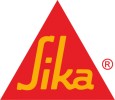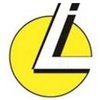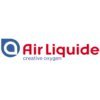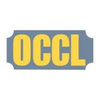Filter interviews by
Apcotex Industries Interview Questions and Answers
11 Interview questions
A work permit system is a set of procedures and documents used to ensure safety measures are in place before starting work in hazardous environments.
Work permit systems are used to control and manage high-risk activities.
They involve obtaining permission and following specific procedures before starting work.
Work permits outline the hazards, precautions, and safety measures required for the task.
Examples of work p...
Fire is a rapid chemical reaction involving the release of heat, light, and various gases.
Fire is a result of the combustion process, where a fuel source combines with oxygen and is ignited by a heat source.
It produces flames, heat, smoke, and often light.
Fire can spread rapidly and can be classified into different types based on the fuel involved, such as Class A (wood, paper), Class B (flammable liquids), Class ...
An accident is an unexpected and unplanned event that results in harm, injury, damage, or loss.
Accidents can occur in various settings, such as workplaces, homes, roads, and public spaces.
They can be caused by human error, equipment failure, environmental factors, or a combination of these.
Examples of accidents include slips and falls, vehicle collisions, fires, chemical spills, and electrical shocks.
Accidents can...
Work at height refers to any activity that takes place above ground level where there is a risk of falling and causing injury.
Work at height includes tasks such as working on ladders, scaffolding, rooftops, or elevated platforms.
It involves activities like construction, maintenance, installation, or repair work.
Safety measures like using fall protection equipment, guardrails, and proper training are essential to p...
A hazard is a potential source of harm or danger that can cause injury, illness, or damage to property.
A hazard can be a physical, chemical, biological, or ergonomic factor that has the potential to cause harm.
Examples of hazards include fire, toxic chemicals, electrical hazards, and unsafe working conditions.
Identifying hazards is crucial in order to implement appropriate safety measures and prevent accidents.
Ris...
A safety audit is a systematic evaluation of an organization's safety policies, procedures, and practices to identify potential hazards and ensure compliance with safety regulations.
A safety audit involves a comprehensive review of safety documentation, such as safety manuals, policies, and procedures.
It includes inspecting the workplace for potential hazards, such as fire hazards, electrical hazards, and chemical...
Housekeeping refers to the practice of keeping a clean, organized, and safe environment in a building or facility.
Housekeeping involves cleaning and maintaining the premises to prevent hazards and ensure a comfortable living or working space.
It includes tasks such as dusting, sweeping, mopping, vacuuming, and disinfecting surfaces.
Proper waste management and disposal are also part of housekeeping.
Regular inspectio...
Excavation is the process of digging or removing earth, rock, or other materials from the ground.
Excavation is commonly done for construction purposes, such as building foundations or underground utilities.
It involves the use of heavy machinery, such as excavators or backhoes, to dig and remove the materials.
Excavation sites need to be properly planned and prepared to ensure safety, including proper shoring or slo...
Confined space refers to an enclosed or partially enclosed area with limited access and ventilation.
Confined spaces are typically not designed for continuous occupancy.
They may have restricted entry and exit points.
These spaces can pose various hazards, such as poor air quality, limited visibility, and potential for engulfment or entrapment.
Examples of confined spaces include storage tanks, tunnels, crawl spaces, ...
Injury refers to physical harm or damage to the body caused by an external force or event.
Injury can range from minor cuts and bruises to severe fractures or internal organ damage.
Common causes of injury include accidents, falls, burns, and exposure to hazardous substances.
Examples of injuries include sprained ankles, concussions, chemical burns, and lacerations.
Injuries can result in pain, disability, loss of fun...
Apcotex Industries Interview Experiences
8 interviews found
(2 Questions)
- Q1. Are u working on dcs
- Ans.
Yes, I am currently working on DCS (Distributed Control System) in my role as an instrumentation engineer.
Yes, I have experience working with DCS systems in various industrial settings.
I am familiar with programming and troubleshooting DCS systems.
I have implemented DCS upgrades and modifications to improve system performance.
I have worked with DCS vendors to optimize system functionality.
- Q2. Are work on pt lt tt
Interview Preparation Tips
- Q1. What is coling tower
- Q2. What N2 plant
(2 Questions)
- Q1. Troubleshooting
- Q2. Labour handling skill
I applied via Referral and was interviewed in Jul 2023. There were 4 interview rounds.

Aptitude test and personal interview round
(1 Question)
- Q1. Technical Interview questions
(1 Question)
- Q1. Salary Discussion round
Interview Preparation Tips
I appeared for an interview in Aug 2022.

(5 Questions)
- Q1. Why u want to join us
- Q2. Tell something about you
- Q3. So u want to ask us about Apcotex
- Q4. Can you handle the work asaigned to you
- Q5. Why u want to leave ur current employer
Interview Preparation Tips
I applied via Naukri.com and was interviewed before Jun 2023. There was 1 interview round.
(1 Question)
- Q1. In electrical you have to be knowledge of Transformers, CT PT , Star-delta starter, PF, single wiring dia., SLD
- Ans. Know about all of my points above.
Interview Preparation Tips
I applied via Recruitment Consultant and was interviewed in Oct 2021. There were 3 interview rounds.
Interview Questionnaire
1 Question
- Q1. Types of gear boxes and compressor,Steam boiler,chiller,airdriyer, mechanical seal is mostly common for all questions.
- Ans.
Types of gear boxes, compressors, steam boilers, chillers, airdryers, and mechanical seals are commonly asked questions for Technical Assistant interviews.
Types of gear boxes include spur, helical, bevel, worm, and planetary.
Compressors can be classified as positive displacement or dynamic.
Steam boilers can be categorized as fire tube or water tube.
Chillers can be classified as air-cooled or water-cooled.
Airdryers can ...
Interview Preparation Tips
I applied via Walk-in and was interviewed in Nov 2020. There was 1 interview round.
Interview Questionnaire
14 Questions
- Q1. What is safety?
- Q2. What is Fire?
- Q3. What is accident?
- Q4. What is hazard?
- Ans.
A hazard is a potential source of harm or danger that can cause injury, illness, or damage to property.
A hazard can be a physical, chemical, biological, or ergonomic factor that has the potential to cause harm.
Examples of hazards include fire, toxic chemicals, electrical hazards, and unsafe working conditions.
Identifying hazards is crucial in order to implement appropriate safety measures and prevent accidents.
Risk ass...
- Q5. What is safety audit?
- Ans.
A safety audit is a systematic evaluation of an organization's safety policies, procedures, and practices to identify potential hazards and ensure compliance with safety regulations.
A safety audit involves a comprehensive review of safety documentation, such as safety manuals, policies, and procedures.
It includes inspecting the workplace for potential hazards, such as fire hazards, electrical hazards, and chemical haza...
- Q6. What is risk?
- Q7. What is work at height?
- Ans.
Work at height refers to any activity that takes place above ground level where there is a risk of falling and causing injury.
Work at height includes tasks such as working on ladders, scaffolding, rooftops, or elevated platforms.
It involves activities like construction, maintenance, installation, or repair work.
Safety measures like using fall protection equipment, guardrails, and proper training are essential to preven...
- Q8. What is excavation?
- Q9. What is confined space?
- Q10. What is housekeeping?
- Ans.
Housekeeping refers to the practice of keeping a clean, organized, and safe environment in a building or facility.
Housekeeping involves cleaning and maintaining the premises to prevent hazards and ensure a comfortable living or working space.
It includes tasks such as dusting, sweeping, mopping, vacuuming, and disinfecting surfaces.
Proper waste management and disposal are also part of housekeeping.
Regular inspection and...
- Q11. What is JSA?
- Ans.
JSA stands for Job Safety Analysis. It is a systematic process used to identify and mitigate potential hazards in the workplace.
JSA involves breaking down a job into individual tasks and analyzing the hazards associated with each task.
It helps in determining the necessary safety measures and controls to prevent accidents and injuries.
JSA is typically conducted before starting a new job or when changes occur in existing...
- Q12. What are the duties of safety supervisor?
- Q13. What is injury?
- Ans.
Injury refers to physical harm or damage to the body caused by an external force or event.
Injury can range from minor cuts and bruises to severe fractures or internal organ damage.
Common causes of injury include accidents, falls, burns, and exposure to hazardous substances.
Examples of injuries include sprained ankles, concussions, chemical burns, and lacerations.
Injuries can result in pain, disability, loss of function...
- Q14. What is work permits systems?
Interview Preparation Tips
Top trending discussions






Interview questions from similar companies

Interview Questionnaire
1 Question
- Q1. About product development

(1 Question)
- Q1. Difference between list and tuple
- Ans.
List is mutable, tuple is immutable in Python.
List can be modified, tuple cannot be modified
List uses square brackets [], tuple uses parentheses ()
List is used for collections of items that may change, tuple is used for fixed collections
Skills evaluated in this interview
Apcotex Industries Interview FAQs
Tell us how to improve this page.
Apcotex Industries Interviews By Designations
- Apcotex Industries Senior Production Officer Interview Questions
- Apcotex Industries Utility Operator Interview Questions
- Apcotex Industries Assistant Manager Interview Questions
- Apcotex Industries Technical Assistant Interview Questions
- Apcotex Industries Instrument Engineer Interview Questions
- Apcotex Industries Fire & Safety Supervisor Interview Questions
- Apcotex Industries Maintenance Officer Interview Questions
- Apcotex Industries Shift Incharge Interview Questions
- Show more
Interview Questions for Popular Designations
- Executive Interview Questions
- Senior Associate Interview Questions
- Consultant Interview Questions
- Associate Software Engineer Interview Questions
- Graduate Engineer Trainee (Get) Interview Questions
- System Engineer Interview Questions
- Senior Software Engineer Interview Questions
- Manager Interview Questions
- Show more
Overall Interview Experience Rating
based on 10 interview experiences
Difficulty level
Duration
Interview Questions from Similar Companies
Apcotex Industries Reviews and Ratings
based on 132 reviews
Rating in categories
|
Production Officer
61
salaries
| ₹2.3 L/yr - ₹5 L/yr |
|
Assistant Manager
27
salaries
| ₹7 L/yr - ₹12.5 L/yr |
|
Junior Officer
26
salaries
| ₹2 L/yr - ₹3.8 L/yr |
|
Shift Incharge
25
salaries
| ₹2.1 L/yr - ₹5.6 L/yr |
|
Officer
14
salaries
| ₹2.8 L/yr - ₹4.8 L/yr |

Sheenlac Paints

Deepak Fertilisers and Petrochemicals

Laxmi Organic Industries

Meghmani Organics
- Home >
- Interviews >
- Apcotex Industries Interview Questions












